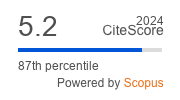Review | Open Access
Variants of Ranked-Choice Voting from a Strategic Perspective
| Views: | 10662 | | | Downloads: | 6044 |
Abstract: Ranked-choice voting has come to mean a range of electoral systems. Broadly, they can facilitate (a) majority winners in single-seat districts, (b) majority rule with minority representation in multi-seat districts, or (c) majority sweeps in multi-seat districts. Further, such systems can combine with rules to encourage/discourage slate voting. This article describes five major versions used, abandoned, and/or proposed for US public elections: alternative vote, single transferable vote, block-preferential voting, the bottoms-up system, and alternative vote with numbered posts. It then considers each from the perspective of a ‘political strategist.’ Simple models of voting (one with two parties, another with three) draw attention to real-world strategic issues: effects on minority representation, importance of party cues, and reasons for the political strategist to care about how voters rank choices. Unsurprisingly, different rules produce different outcomes with the same sets of ballots. Specific problems from the strategist’s perspective are: ‘majority reversal,’ serving ‘two masters,’ and undisciplined third-party voters (or ‘pure’ independents). Some of these stem from well-known phenomena, e.g., ranking truncation and ‘vote leakage.’ The article also alludes to ‘vote-management’ tactics, i.e., rationing nominations and ensuring even distributions of first-choice votes. Illustrative examples come from American history and comparative politics. A running theme is the two-pronged failure of the Progressive Era reform wave: with respect to minority representation, then ranked voting's durability.
Keywords: alternative vote; ballot exhaustion; block-preferential voting; bottoms-up system; exhaustive-preferential system; instant runoff voting; ranked-choice voting; open-list proportional representation; single transferable vote; strategic coordination
Published:
© Jack Santucci. This is an open access article distributed under the terms of the Creative Commons Attribution 4.0 license (http://creativecommons.org/licenses/by/4.0), which permits any use, distribution, and reproduction of the work without further permission provided the original author(s) and source are credited.


